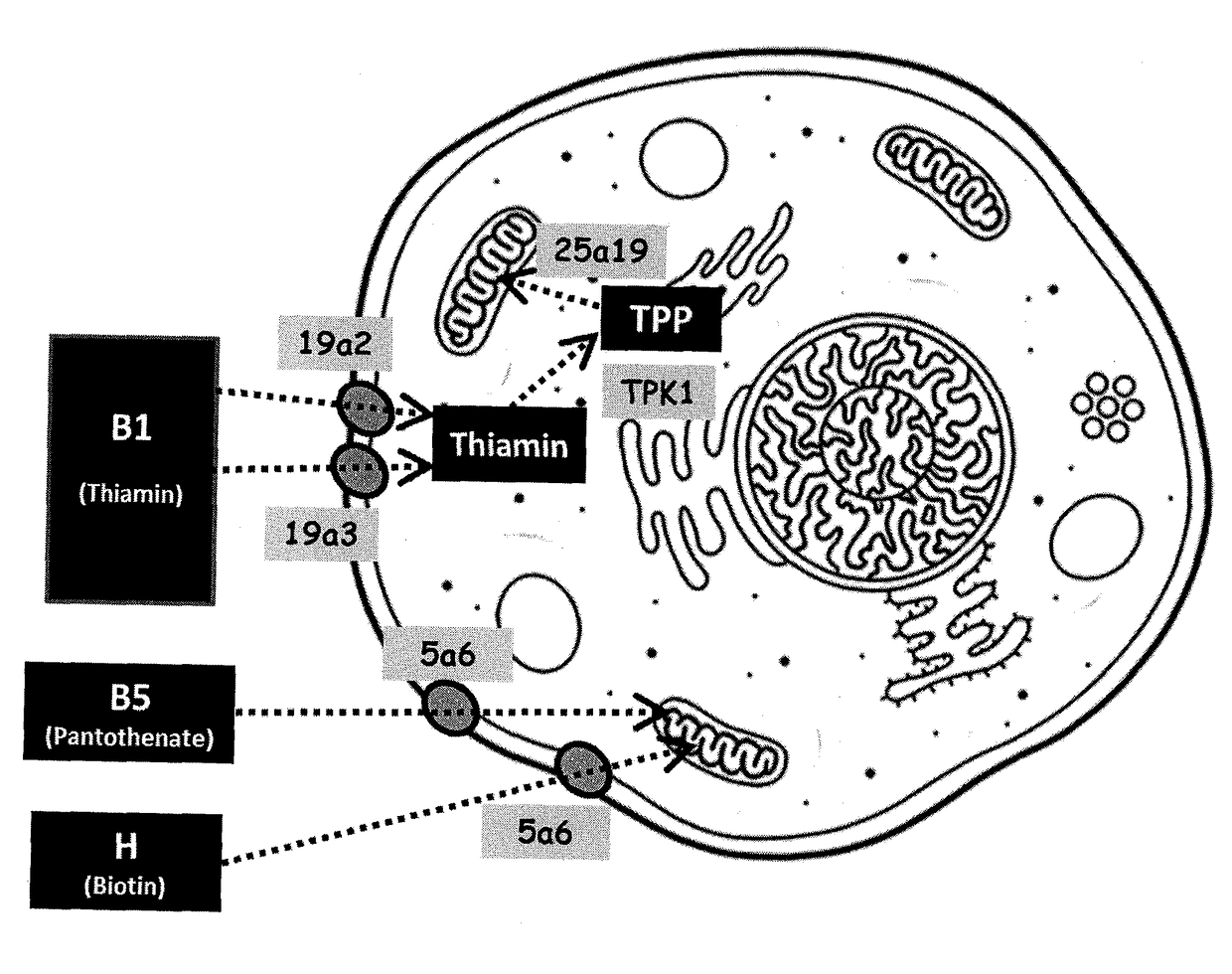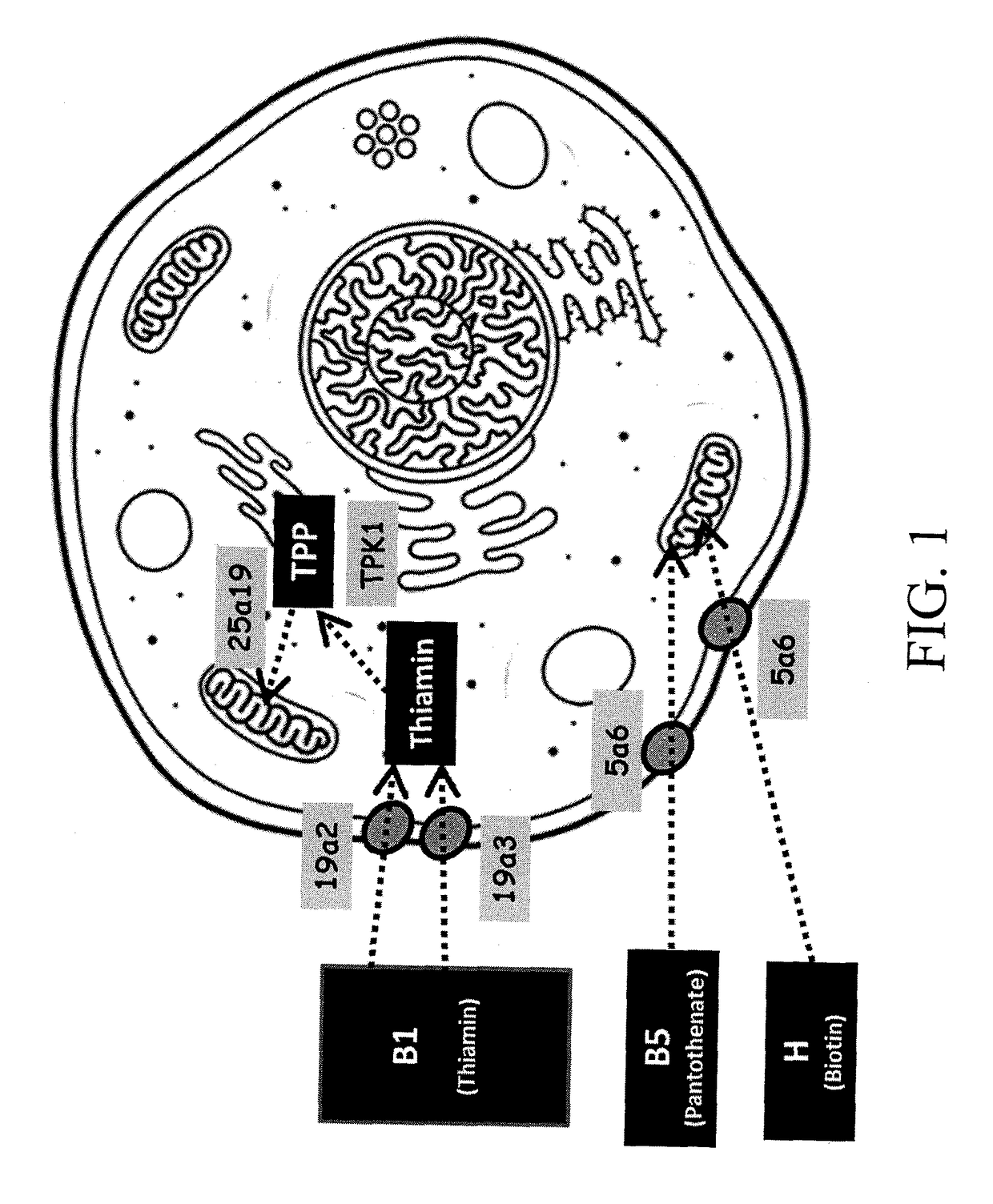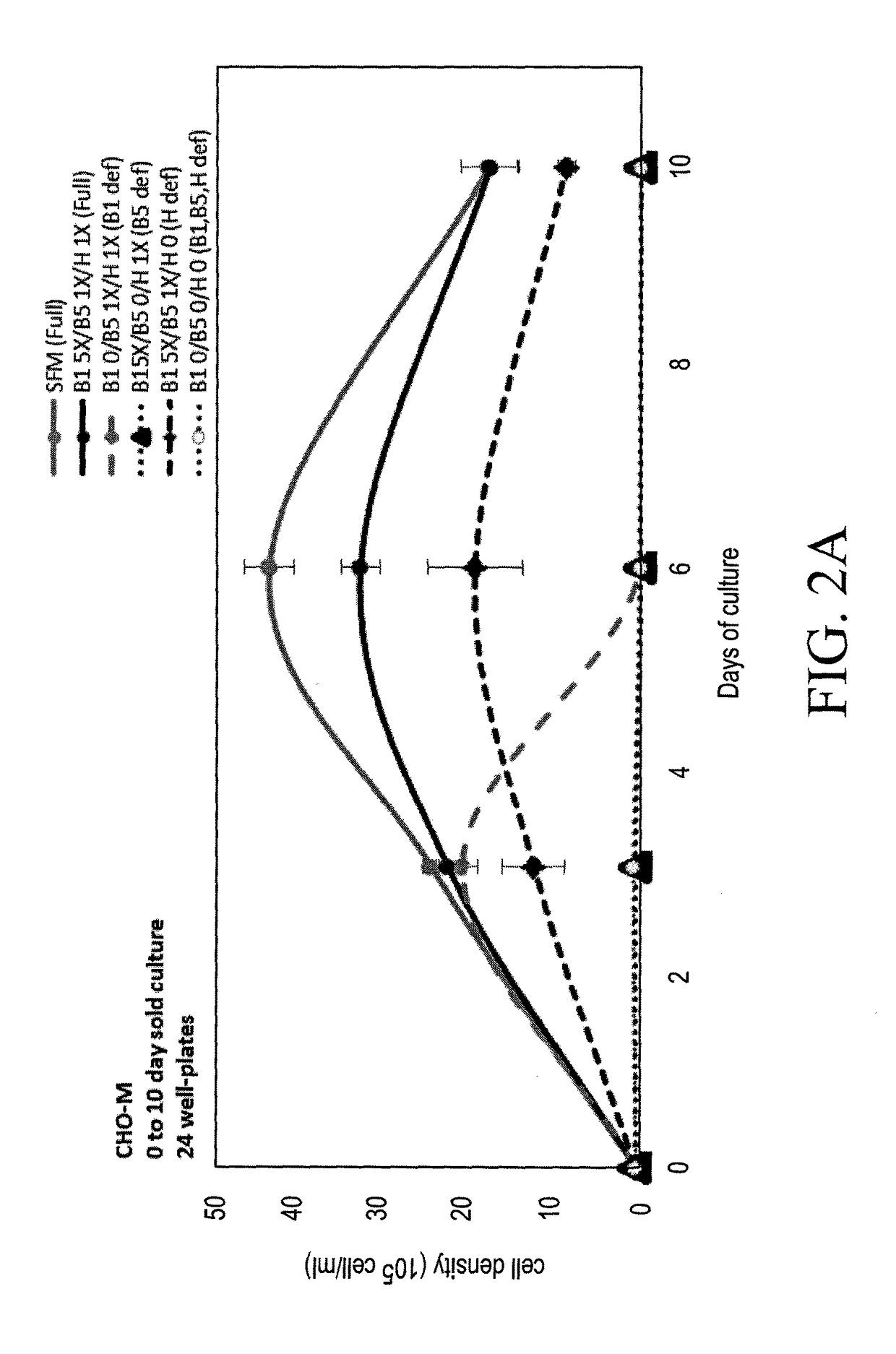Use of vitamins and vitamin metabolic genes and proteins for recombinant protein production in mammalian cells
a technology applied in the field of use of metabolic genes and proteins for recombinant protein production in mammalian cells, can solve the problems of reduced recombinant protein production rate, severe symptoms of mice lacking genes involved in vitamin uptake, and increased recombinant protein production. , the effect of increasing the level of therapeutic proteins
- Summary
- Abstract
- Description
- Claims
- Application Information
AI Technical Summary
Benefits of technology
Problems solved by technology
Method used
Image
Examples
Embodiment Construction
Definitions
[0056]A eukaryotic expression system according to the present invention comprises elements that allow for expression of a gene of interest in a eukaryotic cells such as a CHO cell, preferably a CHO K1 cell, preferably a CHO-M cell. Generally, the eukaryotic expression system comprises at least one expression vector. However, the eukaryotic expression system might also be part of the genome of a eukaryotic cell. The system / expression vector comprises regulatory sequences such as promoters, enhancers, locus control regions (LCRs), matrix attachment regions (MARs), scaffold attachment regions (SARs), insulator elements and / or nuclear matrix-associating DNAs that lead to efficient transcription of a transgene integrated into the expression system. These regulatory sequences as any other sequences referred to herein are often heterologous (i.e., foreign to the host cell being utilized, e.g., derived from a different species as the host cell being utilized) or, while being homo...
PUM
| Property | Measurement | Unit |
|---|---|---|
| soluble | aaaaa | aaaaa |
| concentration | aaaaa | aaaaa |
| bone density | aaaaa | aaaaa |
Abstract
Description
Claims
Application Information
 Login to View More
Login to View More - R&D
- Intellectual Property
- Life Sciences
- Materials
- Tech Scout
- Unparalleled Data Quality
- Higher Quality Content
- 60% Fewer Hallucinations
Browse by: Latest US Patents, China's latest patents, Technical Efficacy Thesaurus, Application Domain, Technology Topic, Popular Technical Reports.
© 2025 PatSnap. All rights reserved.Legal|Privacy policy|Modern Slavery Act Transparency Statement|Sitemap|About US| Contact US: help@patsnap.com



